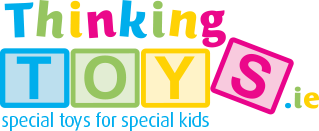Purchase Now
Tell Tale Signs that a Child has Problems with Fine Motor Skills
 Fine motor skills involve the use of our hands, fingers & eyes and can be defined as the ability to co-ordinate the action of the eyes and hands together in performing precise manipulative movements.
Fine motor skills involve the use of our hands, fingers & eyes and can be defined as the ability to co-ordinate the action of the eyes and hands together in performing precise manipulative movements.
Fine motor skills develop after gross motor skills. Gross motor skills utilise larger muscle groups for the movement of the whole body and require less precision. However I cannot overstress the importance of understanding that the acquisition of gross motor skills affects the ability to perform most fine motor skills. So don't worry if an OT appears to be focusing on gross motor/core strength as part of the program to improve your child's weaker fine motor skills, for example hand writing.
Fine motor skills are essential for performing everyday skills independently like cutting, getting dressed, opening lunch boxes, eating and cleaning teeth and using a pencil. Without the ability to complete these everyday tasks, a child's self-esteem can suffer and their academic performance is compromised.
Some Tell Tale signs that your child has problems with fine motor skills
- Has an awkward or immature pencil grasp for their age.
- Has messy, slow or laborious drawing, colouring or writing skills.
- Has difficulty when using scissors.
- Has difficulty performing precise manipulation tasks (lacing activities, colouring between the lines, doing up buttons or zips).
- Dislikes precise hand and eye coordination tasks (e.g. construction toys).
- Has difficulty mastering new fine motor tasks.
- Tires easily when engaged in fine motor task.
- Avoidance: Preference to get others to perform fine motor tasks for them under their direction, rather than actually doing themselves.
- Frustration with precise eye and hand tasks.
Building Blocks for developing Fine Motor Skills include:
Hand and finger strength
Strengthening the small muscles of the hands improves grip and coordination.
Activities: Squeezing playdough or Thera putty, using play tweezers and tearing paper.
Bilateral integration
Using two hands together. One hand is leading e.g. opening a jar lid; and the other hand is helping e.g. stabilising the jar. Using both hands together efficiently supports tasks like writing and dressing.
Crossing Midline
The ability to move a hand, foot or eye across body’s midline (the imaginary line running from a person's nose to pelvis that divides the body into left and right sides). Difficulty crossing the midline can affect the ability to move a hand or eye across a page when reading or writing. Other signs could be difficulty using both hands together when zipping up a jacket or switching hands when writing or drawing instead of crossing the midline.
ACTIVITIES
Reaching across the body's midline: In our house all treats were presented to Ailis on the right hand side for two reasons. Firstly we had left side neglect after brain surgery and Ailis wouldn't automatically use her left hand. Secondly by presenting the treat to her right Ailis had to cross her midline. (Note: the fun rule to the game was that Ailis could only use her helper (left) hand.
Throwing a ball: always throw the ball to off centre to the child's left or right side. This way one arm will always be crossing the midline to catch.
Hand Dominance: The consistent use of one (usually the same) hand for task performance, which allows refined skills to develop.
If your child is not consistently showing dominance, then try the following:
- Get two identical sticks and give them to the child to hold
- Put the music on
- Get your child to tap out the beat on the sticks by tapping the sticks together
The child will invariably tap the beat with the most dominant hand. If we see 70% dominance or greater then encourage the use of this hand as the dominant hand.
This is known to play an important role in fine motor control. The eyes need to work in a co-ordinated way to quickly localise and track objects. The ability to process information received from the eyes to control, guide, and direct the hands in the carrying out of a given task, such as handwriting.
Hand division: Using the thumb, index and middle finger for manipulation, leaving the fourth and little finger tucked into the palm not participating. This is an important skill for handwriting and development of the tripod grasp.
Using tongs and tweezers, picking up beads, placing small pegs into a pegboard
Hint: If your child cannot tuck the fourth and little finger into the palm of their hand (say using a tweezers or holding a crayon) give them something small like a piece of chalk or broken crayon to hold tucked into their palm using their fourth and little finger.
Tips for success!
Encourage using the dominant hand for tasks once dominance is established.
Provide fun, play-based practice to keep engagement high.
Start with larger objects before progressing to smaller ones for better control.
